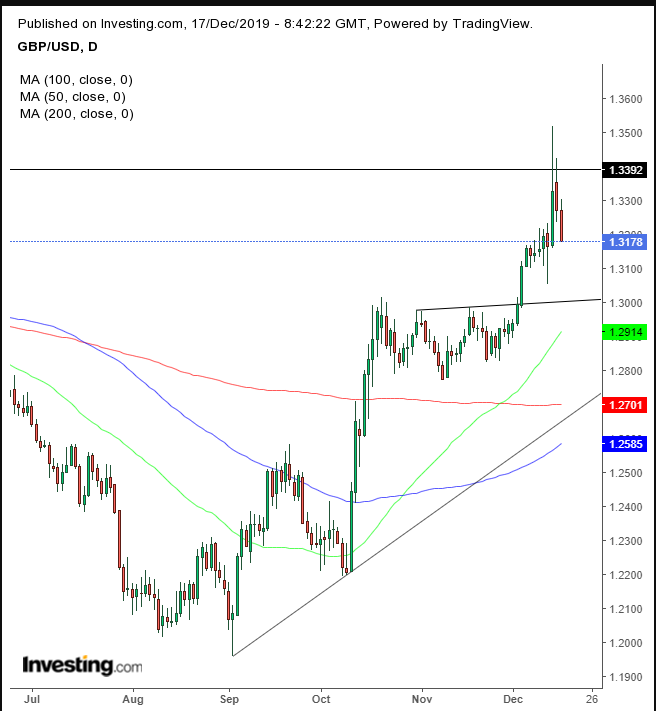United Homes Group stock plunges after Nikki Haley, directors resign
The pound’s current decline may be nothing more than a pullback within a rally.
Sterling fell for the second day after UK Prime Minister Boris Johnson said he would introduce legislation to outlaw any further Brexit delay beyond 2020. The same market that advanced on the foregone conclusion that the 2016 Brexit vote would fail and then plunged after the shocking Leave victory is now selling off on the increased possibility of a hard, no-deal Brexit.
Yesterday’s drop followed the UK’s worst manufacturing data in over seven years. From a technical perspective, negative fundamental events such as this provide the optimum timing for profit-taking: in this case, the pound had completed a bullish pattern at 1.3000 and the U.S. announced its desire to enter a trade deal with the UK.

We wrote a post around two weeks ago about the pound’s H&S continuation pattern. The only worry we have is a resistance at the 1.3400 level, the March peak and the highest price since June 2018. Strictly speaking, the uptrend since the September bottom was extended when it posted a higher high on Friday, above 1.3500. However, we would like to see the price gain that milestone on a closing basis, as well.
A return move occurs in roughly two-thirds of breakouts. Therefore, this selloff doesn’t alarm us, especially as it's within an uptrend, after a golden cross underscored the bullishness of the H&S continuation pattern.
Trading Strategies
Conservative traders would wait for that close above 1.3400 before committing to a long position, while not shorting in an uptrend.
Moderate traders would be content with evidence of support at 1.3000 to enter a long position.
Aggressive traders may enter a long position at will, providing they have worked out their entries and exits before entering the position and providing that it offers a minimum 1:3 risk-reward ratio, to justify the risk.
Trade Sample
